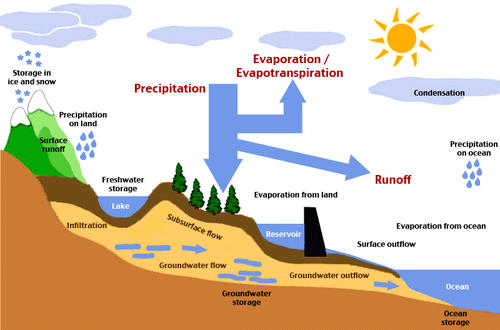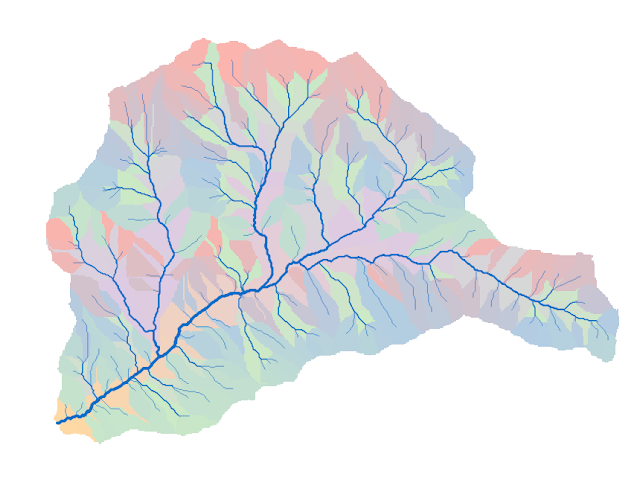Stream flow and evapotranspiration responses to precipitation/snow melt

Runoff is the process that closes the hydrological cycle starting from evaporation of water over the oceans. Runoff serves to bring the excess precipitation on land, which wasn’t infiltrated or evapotranspirated back to the ocean.
Goals
The goal of this unit is to introduce the processes that cause runoff and how runoff relates to the hydrological cycle.
After successful completion of this unit students will be able to
- Discuss watersheds and stream networks in general terms of relations between network properties and stream response
- Quantify drainage density, stream and hydrograph responses, event-flow volume
- Separate heuristic hydrograph (graduate students only)
- Explain the effects of input and basin characteristics on the hydrograph, and the event-flow-generation processes including channel-, overland flow, subsurface flow, and hill slope processes (graduate students only)
- Identify runoff sources

Students’ tasks
- Read Dingman’s Chapter 10 to 10.4.4.4 (included)
- Take this MetEd module on runoff sections Overview of runoff (all except infiltration terms, review questions), Runoff paths (all except review questions), and Basin properties (all except urbanization, review questions, and exercise on urbanization). Skip the pre-assessments and the quizzes in the module. If you don’t have already a MetEd account, the module will lead you thru the signup process prior to your being able to take the module.
- Watch this video of a worked problem
- Fill out the questionnaire prior to the deadline and submit the solutions of the Unit 20 Applications tasks assigned at your class level.
Acknowledgements
Except for the worked problem the source of the movie material is the COMET ® Website at https://meted.ucar.edu/ of the University Corporation for Atmospheric Research (UCAR), sponsored in part through cooperative agreement(s) with the National Oceanic and Atmospheric Administration (NOAA), U.S. Department of Commerce (DOC) ©1997-2010 University Corporation for Atmospheric Research. All Rights Reserved.
© 2019 Nicole Mölders | All rights reserved